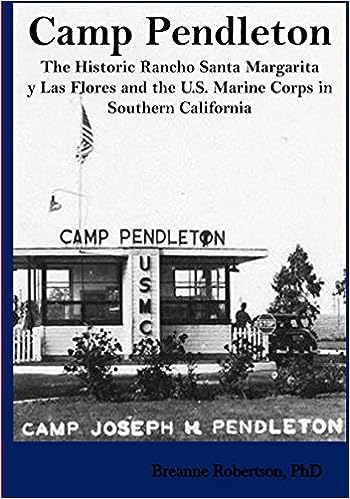From the Introduction: Approximately 50 miles north of San Diego, the historic Rancho Santa Margarita y Las Flores (now known as the Santa Margarita Ranch House National Historic Site and Las Flores Adobe National Historic Landmark) has borne witness to the sweeping and often dramatic events that produced Marine Corps Base Camp Pendleton and the modern Marine Corps on the West Coast. Soon after the purchase of the expansive ranch land in 1942, Marines established a permanent training installation and returned to Southern California as part of the largest national mobilization effort for war since World War I. Nearby, the Santa Margarita Ranch House would serve as a primary residence for Marine Corps commanders for the next 60 years.
The role of Camp Pendleton was essential to the development of an expeditionary Marine Corps both during and after the Second World War. Over the course of seven decades, the Marines assigned to the West Coast facility have demonstrated tremendous mobility and combat efficiency as the nation’s foremost “force in readiness.” As the primary installation for training Marines for the Pacific theater during World War II, Camp Pendleton quickly expanded to accommodate the influx of recruits while simultaneously developing a rigorous training program in amphibious operations. During the Cold War, the military post again served as the gateway for Marines bound for combat in Asia. The wars in Korea and Vietnam each required expediency and flexibility on the part of the Marine Corps, which swiftly rebuilt its forces for deployment abroad. A continued emphasis on amphibious landings combined with naval and air support facilitated Marine combat and counterinsurgency efforts during these conflicts and secured the distinct mission and reputation of the service for decades to come. In the post-9/11 era, Camp Pendleton continues to prepare Marines for rapid deployment to humanitarian and combat operations around the globe.
112 pages





